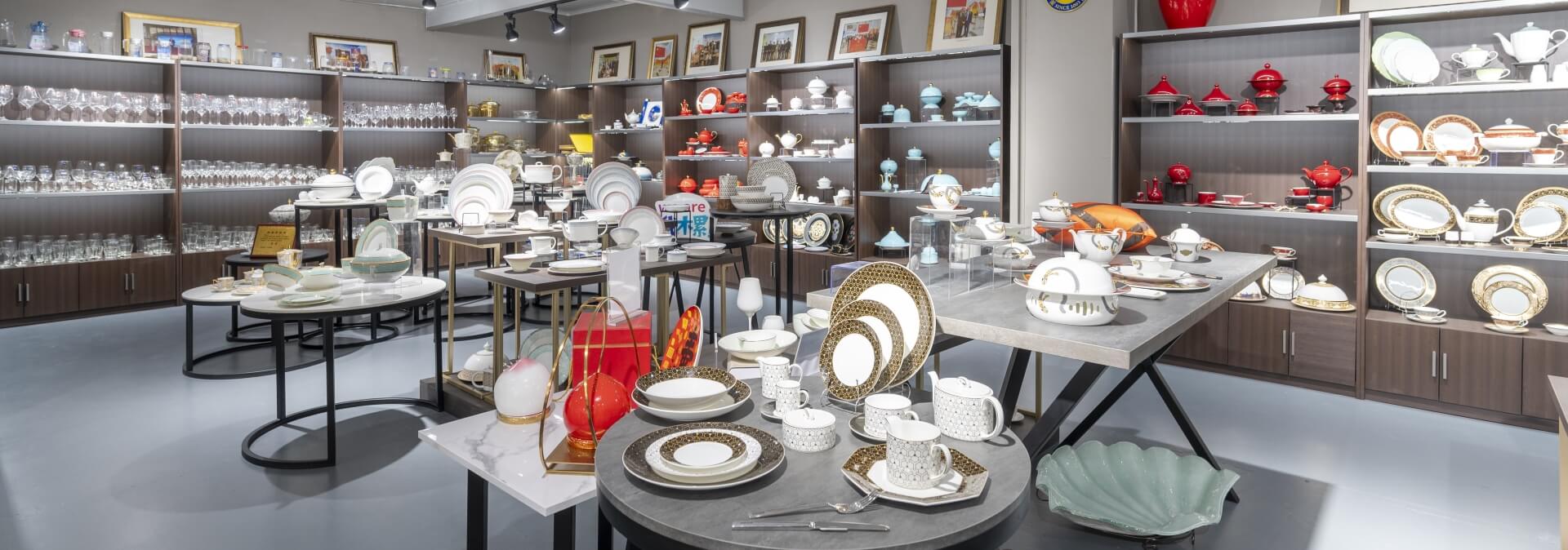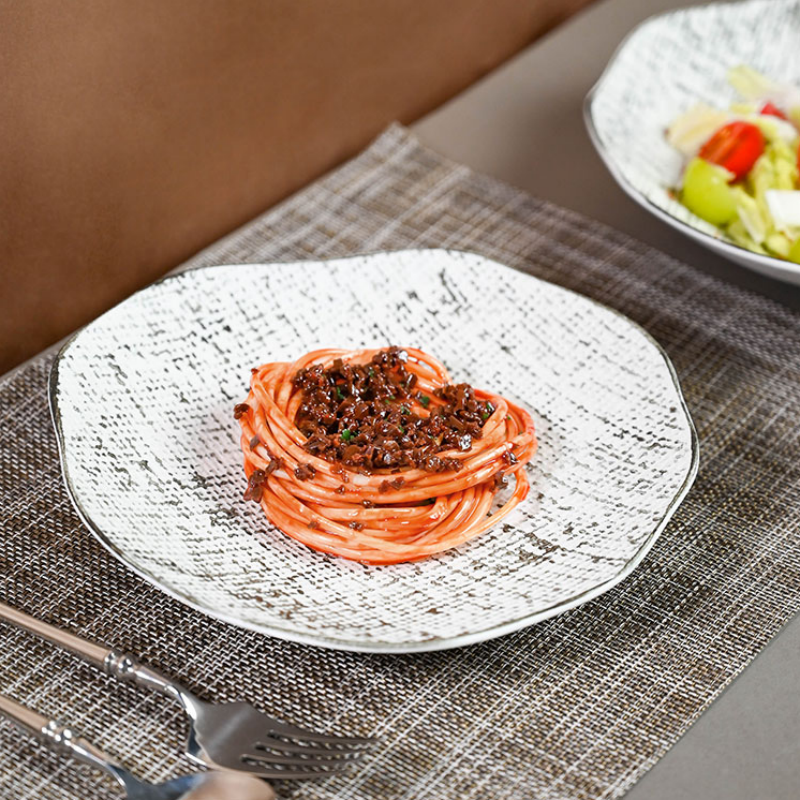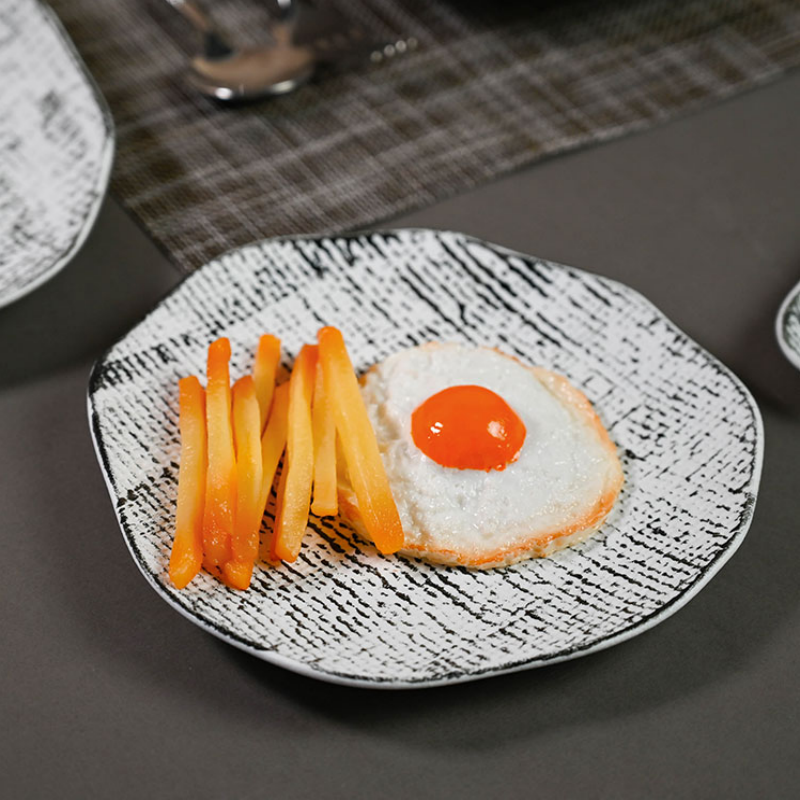
Article
Ceramic Dinnerware Wholesaler: 2024 Latest Guide
In the world of dining, how food is presented holds significant sway over the entire culinary experience. Beyond the flavors and scents, the visual presentation of a dish, particularly when served on high-quality dinnerware, can greatly enhance the pleasure and perception of a meal. Amidst the array of materials utilized for dinnerware, ceramic stands out for its widespread popularity and remarkable versatility in the Ceramic Dinnerware Wholesaler marketplace.
Introduction to the Ceramic Dinnerware Market
1.1 Understanding the Ceramic Dinnerware Industry
The ceramic dinnerware industry is a vital segment within the broader homeware market, catering to the essential need for dining essentials. From casual family dinners to elaborate social gatherings, ceramic dinnerware serves as both functional and aesthetic elements of dining experiences worldwide. Within this industry, wholesalers play a crucial role in bridging the gap between manufacturers and retailers, ensuring a smooth flow of products to meet consumer demands.
1.2 Significance of Market Analysis for Wholesalers
For Ceramic Dinnerware Wholesaler like P&T Royal Ware, comprehensive market analysis is paramount. It enables them to understand market dynamics, anticipate trends, and make informed decisions regarding inventory, pricing, and distribution strategies. By staying abreast of consumer preferences, competitive landscapes, and emerging opportunities, wholesalers can position themselves strategically to capitalize on market trends and stay ahead of the curve.
1.3 Evolution of Ceramic Dinnerware
The journey of ceramic dinnerware spans centuries, tracing its origins to ancient civilizations where evidence of its use abounds. Initially crafted by hand in pottery studios of ancient cultures, ceramic dinnerware has evolved dramatically over time, propelled by innovations in materials, designs, and production methods. This evolution has seen ceramic dinnerware transition from functional necessities to coveted lifestyle products, mirroring the dynamic shifts in societal tastes and preferences across epochs.

Global Market Trends
2.1 Analysis of the Global Ceramic Dinnerware Market
The global ceramic dinnerware market maintains a trajectory of steady growth, propelled by factors like population expansion, urbanization, and the escalation of disposable incomes worldwide. Recent market analyses forecast an upward trajectory for the industry, anticipating significant expansion in the foreseeable future. This growth is underpinned by heightened consumer expenditure in both home décor and dining experiences, signaling robust demand for ceramic dinnerware products across diverse demographics.
2.2 Key Regions Driving Market Demand
Key regions driving demand for ceramic dinnerware include North America, Europe, Asia Pacific, and emerging markets in Latin America and the Middle East. Each region has its unique consumer preferences, cultural influences, and economic factors shaping demand for ceramic dinnerware products.
2.3 Trends in Consumer Preferences
Consumer preferences in ceramic dinnerware are evolving, reflecting broader lifestyle trends such as sustainability, minimalism, and personalization. There is a growing demand for eco-friendly materials, timeless designs, and customizable options to suit individual tastes and preferences. Additionally, consumers are increasingly seeking value-added features such as dishwasher and microwave-safe properties, further influencing purchasing decisions.
Segmentation Analysis
3.1 Material, Design, and Price Range Segmentation
Within the ceramic dinnerware market, segmentation plays a crucial role in catering to diverse consumer needs and preferences. Materials range from traditional earthenware and stoneware to more contemporary porcelain and bone china, each offering distinct characteristics in terms of durability, aesthetics, and price points. Designs vary from classic patterns to modern motifs, catering to a wide range of tastes and style preferences. Price ranges encompass budget-friendly options for everyday use to premium collections designed for special occasions.
3.2 Market Share and Growth Potential
Analysis of market share reveals the dominance of established brands alongside the emergence of niche players catering to specific market segments. Growth potential varies across different segments, with opportunities for expansion in emerging markets, product diversification, and strategic partnerships. Understanding market dynamics and consumer behavior within each segment is essential for wholesalers to optimize their product offerings and distribution channels accordingly.

3.3 Emerging Segments and Impact on the Market
Emerging segments within the ceramic dinnerware market include sustainable options, artisanal craftsmanship, and smart dining solutions. These segments reflect shifting consumer preferences towards ethical consumption, appreciation for craftsmanship, and integration of technology into everyday products. Wholesalers must stay attuned to these emerging trends and adapt their strategies to capitalize on new market opportunities while maintaining a competitive edge.
Competitive Landscape in the Ceramic Dinnerware Industry
4.1 Overview of Major Players
The ceramic dinnerware industry boasts a diverse landscape of major players, ranging from well-established brands to emerging artisans. Among the prominent names are household Ceramic Dinnerware Wholesaler names like P&T Royal Ware has carved out niches with their modern designs and innovative approaches to dinnerware.
4.2 Analysis of Market Share, Strategies, and Positioning
Market share within the ceramic dinnerware industry is heavily influenced by factors such as brand reputation, product quality, and distribution channels. Established players leverage their strong brand equity and extensive distribution networks to maintain significant market shares. Strategies often revolve around product diversification, international expansion, and strategic partnerships to enhance market positioning and competitiveness.
4.3 Evaluation of Competitive Strengths and Weaknesses
Each major player in the ceramic dinnerware industry possesses unique strengths and weaknesses. Established brands typically have strong brand recognition and customer loyalty but may face challenges in adapting to rapidly changing consumer preferences. Conversely, newer entrants may offer fresh perspectives and innovative designs but may lack the resources and infrastructure of larger competitors. Understanding these dynamics is crucial for Ceramic Dinnerware Wholesaler like P&T Royal Ware to identify opportunities for collaboration or differentiation in the market.
Technological Advancements and Innovation
5.1 Impact of Technological Advancements
The realm of ceramic dinnerware production has undergone a profound transformation thanks to technological advancements, resulting in enhanced quality, efficiency, and design versatility. Innovations in manufacturing techniques, including slip casting and digital printing, have unlocked new levels of precision and customization in the creation of ceramic dinnerware. Furthermore, breakthroughs in materials science have yielded novel materials boasting superior durability and aesthetic appeal, further enriching the landscape of ceramic dinnerware offerings.
5.2 Analysis of Innovative Designs and Materials
Innovative designs and materials play a significant role in driving consumer preferences and market demand. From minimalist Scandinavian-inspired designs to intricate hand-painted motifs, ceramic dinnerware encompasses a wide range of styles to suit diverse tastes. Materials such as porcelain, bone china, and stoneware offer varying degrees of durability and elegance, catering to different consumer preferences and lifestyles.
5.3 Influence on Market Dynamics and Consumer Preferences
Technological advancements in ceramic dinnerware production have reshaped market dynamics and consumer preferences. Consumers increasingly value products that combine aesthetic appeal with practical functionality, driving demand for innovative designs and materials. Additionally, advancements in manufacturing processes have enabled greater customization and personalization, allowing consumers to express their individuality through their choice of dinnerware.
Future Outlook and Opportunities
6.1 Forecasting Future Trends and Growth Prospects
The future of the ceramic dinnerware market looks promising, with continued growth expected driven by factors such as population growth, urbanization, and rising disposable incomes. Consumer preferences are likely to continue evolving, with a growing emphasis on sustainability, craftsmanship, and customization. Wholesalers like P&T Royal Ware can capitalize on these trends by offering a diverse range of products that cater to changing consumer demands.
6.2 Identification of Opportunities in Emerging Markets or Niches
Opportunities abound for wholesalers in emerging markets or niches within the ceramic dinnerware industry. Emerging markets in regions such as Asia-Pacific and Latin America offer significant growth potential, driven by rising incomes and changing lifestyles. Additionally, niche markets such as eco-friendly dinnerware, artisanal ceramics, and smart dining solutions present opportunities for differentiation and innovation.
6.3 Discussion on Potential Challenges and Strategies to Mitigate Risks
Despite the promising outlook, wholesalers may face challenges such as increasing competition, fluctuating raw material costs, and evolving regulatory landscapes. Strategies to mitigate risks include investing in research and development to stay ahead of market trends, optimizing supply chain management to minimize costs, and cultivating strong partnerships with suppliers and retailers. By staying agile and adaptable, wholesalers can navigate challenges and capitalize on opportunities in the dynamic ceramic dinnerware market.
Conclusion
In conclusion, the ceramic dinnerware industry presents both challenges and opportunities for Ceramic Dinnerware Wholesaler like P&T Royal Ware. By conducting thorough market analysis, understanding global trends, and segmenting the market effectively, wholesalers can position themselves strategically to navigate the evolving landscape and meet the diverse needs of consumers worldwide. Through innovation, adaptation, and a keen understanding of consumer preferences, wholesalers can thrive in this dynamic and competitive market environment.
LET'S TALK TOGETHER
Lorem ipsum dolor sit amet, consectetur estor adipi isicing elit, sed do eiusmod tempor este uterre incididui unt ut

